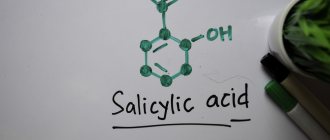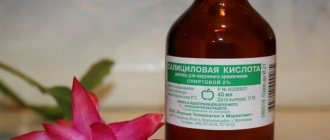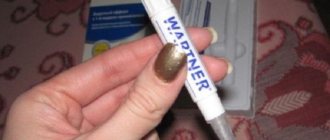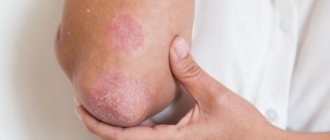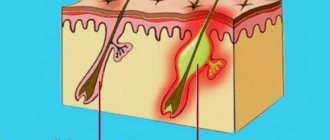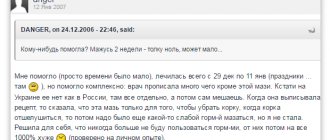The use of salicylic acid for warts is an opportunity to quickly and without negative consequences get rid of skin growths at home. The product has a cauterizing effect, which causes destruction of the tissue of the formation - as a result, it simply falls off from healthy skin. During treatment, it is important to take precautions and protect the epidermis around the growth from the negative effects of the product. You can buy salicylic acid for warts at a pharmacy, it is sold without a prescription, but you need to remember that the drug has contraindications and take them into account in treatment.
What does a plantar wart look like?
Since the formation is located on the foot, this can lead to pain and injury to the wart itself.
For these reasons, a plantar wart must be treated, although there is a small chance that a plantar wart will go away on its own without serious treatment. Unfortunately, it is still not easy to get rid of a wart, so it is recommended to consult a dermatologist to reduce the risk of infecting other people, as well as to reduce the treatment time for the disease. The use of exclusively folk remedies and independent attempts to get rid of the tumor are undesirable. A plantar wart has a deep root that is almost impossible to remove on your own, so relapses occur. Folk remedies often severely injure surrounding tissues, which can lead to an increase in the affected area and unpleasant consequences in the form of burns and scars.
Contraindications to the use of salicylic acid for warts
Removing warts with salicylic acid is a convenient and effective practice, but not everyone can use this component in skin treatment - the product has a number of contraindications.
Let's consider who should not treat growths with salicylic acid. The risk group includes:
- Pregnant and lactating women . At the moment, there are no studies yet that would indicate what effect the use of the drug has on the development of the fetus and the milk of a new mother. In essence, there is no evidence of a negative effect, but there is also no certainty of its absence. So, expectant mothers and women who have just become mothers are not recommended to take risks and are advised to use other, more studied components in the treatment of warts.
- Children under 7 years old . Salicylic acid is not used for warts in young children. Pediatricians in general do not recommend self-medicating children, and therefore, if a child has a skin growth, it is necessary to contact a pediatrician, and not select a folk remedy yourself.
- Allergy sufferers . Salicylic acid is a fairly active component, and therefore it can cause symptoms of individual intolerance. If you are prone to allergies, you should choose a milder drug.
- Patients with concomitant skin diseases . It is important for this group of people to consult a dermatologist before using any product on the skin.
- People with bleeding disorders . Salicylic acid, due to its cauterizing effect, can cause disruption of the capillaries, which in turn can provoke bleeding due to coagulation disorders.
It is also recommended to consult a doctor before using salicylic acid for warts for those who suffer from diseases of the kidneys and endocrine system.
As for people who are not included in the group of contraindications, a number of rules regarding the use of the drug also apply to them. Be sure to do a sensitivity test before proceeding to use it. Take a cotton swab, dab it into the solution, lightly touch it over your wrist, and rinse off after 10 minutes. If there are no negative symptoms within 24 hours, the product can be used.
Please note that salicylic acid, which is sold in pharmacies, is usually a 2% alcohol solution, that is, the drug consists of 98% alcohol and 2% acid. Together, these two components have a powerful drying effect, and therefore it is important to protect the skin around it before treating the growth.
- See also contraindications to the use of alcohol against warts
Symptoms
If you suspect the appearance of a neoplasm, you should not only know what a plantar wart looks like in the photo, but also remember that the disease has characteristic symptoms:
- noticeable itching at the site of formation;
- the size of warts ranges from a few millimeters to 2 centimeters;
- unlike calluses, a wart is painful;
- bleeding when damaged;
- pain when walking.
If you experience similar symptoms, consult your doctor
. It is easier to prevent a disease than to deal with the consequences.
Causes of plantar warts
Plantar warts are caused by human papillomavirus (HPV) infection of the foot. The main route of transmission is contact; infection occurs through shared objects or directly from person to person. A favorable environment is warmth and humidity, so it is important to take precautions when visiting a bathhouse, swimming pool, sauna and gym.
The cause may also be a weakened immune system, since in normal conditions the human papillomavirus does not give visible manifestations.
This type of wart can also occur due to microtrauma of the epidermis, dry skin, wearing tight, uncomfortable shoes, or hyperhidrosis. Also, the causes of warts on the foot can be diseases that lead to deformation of the feet - arthritis of the joints, osteoarthritis, flat feet, as well as diseases that lead to disruption of the integrity of the skin of the foot: diabetes mellitus, varicose veins. It must be remembered that frequent stress can indirectly affect the occurrence of this disease.
HPV can be acquired accidentally by simply walking barefoot on an infected surface, and the virus can live for up to several months without a direct host. After entering the body, it may not manifest itself for several days or even weeks, which is why it is not always possible to accurately determine the time of infection.
How to cure plantar warts
When a plantar wart appears, the question arises of how to cure this tumor. When the growths cause excessive discomfort and spread quickly, the best solution is to contact a dermatologist as soon as possible, he will select the most appropriate treatment option. There are several ways to solve this problem.
The most radical of them is surgical: the wart and its roots are surgically removed. This method is not the most effective, since the roots of the tumor are located in the deep layers of the skin. In some cases, it is not possible to completely remove them.
Wart removal can be done using laser and electrocoagulation, as well as cryotherapy.
In addition to removal in medical institutions, plantar warts can be removed using less radical methods, such as ointments, solutions, special patches, as well as folk remedies. These products for removing plantar warts have a number of advantages and disadvantages, the main one of which is the long treatment time.
Removal of plantar warts
One of the most common ways to remove plantar warts is to remove them in specialized medical institutions. At the appointment, the dermatologist should tell you in detail how to get rid of plantar warts and, based on the results of the examination, choose the most suitable method. Despite the fact that thorns are difficult to cure, there is no specific means of removing them; all methods that are appropriate for the treatment of other types of warts are used. Removal of plantar warts can occur on an outpatient basis, but your doctor can prescribe remedies to help remove the growths at home.
Surgical removal of warts
Along with other treatment methods, surgery is used to remove warts. The wart is scraped out with a special scalpel under local anesthesia. After this procedure, if the plantar wart is large, sutures are placed under the skin and removed within one to two weeks. The wound site is treated with a disinfectant solution and an aseptic bandage is applied. There is usually a small scar left at the site of removal.
The complexity of this method is that during the operation the doctor must remove all the roots, otherwise the plantar wart will appear again. Therefore, this method is used today only if all other treatment methods have been ineffective.
Liquid nitrogen removal
Removal with liquid nitrogen involves exposing the neoplasm to extremely low temperatures; this is the most common modern and fastest way to treat plantar warts.
The method is based on freezing the tumor tissue itself. In fact, inside the wart cells, under the influence of an extremely low temperature of -196 degrees Celsius, ruptures occur, leading to the death of the wart.
Cryodestruction is carried out manually or using hardware. If the wart is large or the procedure is performed on a child, then it becomes necessary to use local anesthesia, usually novocaine.
The exposure time to direct liquid nitrogen is up to 30 seconds. After the first cauterization, the doctor should pause to assess the effectiveness of the effect and the need for repeated cauterization.
After freezing, a bubble with a colorless or reddish liquid forms at the site of the wart, which indicates the beginning of the inflammatory process. This is a normal reaction to the cauterization procedure.
Cryodestruction is considered painless, but when treating plantar warts it must be repeated several times to achieve the final effect. After the wart falls off, there are no scars left.
The advantages of liquid nitrogen removal are:
- freezing prevents further spread of the disease to the nearest skin;
- lack of special training;
- short duration of the procedure;
- the risks of developing scars or cicatrices are minimal.
The disadvantages of cryodestruction of plantar warts are:
- the need to repeat the course if the affected area is large or due to the size of the wart;
- the human factor - the professionalism of the doctor performing this procedure is a guarantee of success. The doctor must correctly assess the time and degree of exposure of the tissue to nitrogen, otherwise a burn may form;
- the discomfort that a swollen bladder brings and the need to treat it are also considered disadvantages of the method.
In general, reviews of the treatment of plantar warts using liquid nitrogen cauterization are positive, since this is the simplest, most effective and affordable method.
Laser removal
Laser removal is considered one of the most effective and safe methods. After laser treatment, the wart ceases to be infectious. The procedure itself is painless; the laser has a special attachment built into it that cools the treatment site. Additionally, one or more pain-relieving injections are given before the operation. The patient usually feels a slight tingling sensation during the procedure. After removing the tumor, there are no traces left, since the laser directly burns the diseased tissue. The laser method allows maximum control over the depth of exposure, which is individual in each case. Therefore, even with deep tissue damage, it is possible to completely remove the roots, which means preventing the regrowth of the wart.
The operation takes place under sterile conditions, there is no direct contact with the skin or wart, and the operation lasts only a few minutes. Positive results when removing plantar warts using a laser also make this method the most attractive.
The main disadvantage of laser plantar wart removal remains the high cost, which usually includes a doctor’s consultation, anesthesia and the operation itself. In addition, the wound takes a long time to heal after removal and requires compliance with hygiene rules.
Treatment of plantar warts
Before treating a plantar wart, you need to make sure the diagnosis is accurate and then proceed directly to the procedures. In addition to surgical interventions, the doctor may prescribe immunotherapy and topical medications.
The need for immunotherapy is usually justified, since the disease is caused by a virus, which actively develops when the body is weakened. Topical immunotherapies directly target the virus in two ways. In the first case, the drug stimulates the immune system, and in the second, an antigen is introduced into the body of the wart, which also activates the immune system, so that the wart can disappear faster.
Treatment of a plantar wart takes quite a long time; it is important not to forget to strengthen the immune system and maintain hygiene. If removal and treatment are not applied, the wart can go away on its own for more than a year, while the person is a source of infection for everyone around him. You should pay close attention to this unpleasant disease and be sure to consult a dermatologist, who will definitely tell you how and how to treat a plantar wart.
Treatment of a plantar wart directly depends on compliance with all hygiene standards and doctor’s instructions; daily treatment of the formation is a guarantee of successful recovery.
Treatment at home
Any new formations on the skin cannot be ignored, since cancer awareness is now growing all over the world. You should not ignore an appointment with a specialist; he can prescribe treatment for plantar warts at home. In this case, special solutions, ointments, and a patch for warts are usually prescribed.
Ointments are one of the mildest methods of treatment; they act on the wart itself, as a result of which it gradually dies and disappears. The following types of ointments are used in treatment:
- antiviral ointment;
- acid-based ointment;
- various ointments based on herbal remedies.
The most commonly prescribed ointments are salicylic acid and oxolinic ointment. Any type of ointment is applied pointwise to the wart several times a day in accordance with the instructions. When treating a plantar wart, before applying the drug, it must be steamed in warm water in advance. It is advisable to apply any ointment at night so that you do not have to step on the formation and wash off the ointment.
To get rid of plantar warts at home, you can use a special salicylic acid-based patch. This product has low cost and proven effectiveness. The patch is sold in pharmacies without a prescription, the principle of its use is very simple - a wart is sealed with a piece of the patch, and a regular medical plaster is attached on top. The patch needs to be changed at certain intervals. It may take about two weeks to remove a small wart, and you should not leave the wart without a patch for a long time. As treatment progresses, the area of the wart decreases; after 12 hours it becomes covered with a crust, which then disappears. After successful treatment, a small pinkish spot remains on the skin, which should completely disappear over time.
When applying the patch, you must be careful - when applying it, you should avoid healthy areas of the skin, otherwise severe irritation may occur. There are contraindications for using this method of wart removal, so the decision to prescribe a patch must be made by a doctor.
Another way to treat plantar warts at home is hyperthermia. The feet affected by warts are immersed in the hottest possible water. Such procedures are repeated several times. In some cases, hyperthermia shows a positive effect. The mechanism of the procedure is based on the stimulation of small blood vessels in the legs and activation of local immunity.
At home, you can use low temperature treatment, similar to removing warts with liquid nitrogen. To do this, you can use special applicator pens or sprays. As with cryoablation, multiple applications may be required.
Treatment with folk remedies
Despite the fact that modern medicines are much more effective and with their help the process of removing plantar warts occurs faster, the effectiveness of treatment with folk remedies cannot be denied. Traditional medicine has accumulated vast experience in combating warts, and some methods remain effective.
- Celandine juice is one of the most popular methods for removing spines. You can use the juice of a fresh plant or purchase Mountain Celandine at the pharmacy, which contains, in addition to celandine juice, other herbal extracts. The juice is applied once or twice a day to the affected area.
- Acetic acid, along with various additional agents, is also used to remove warts. In addition to acid, onions and flour are used. You can directly drip the acid itself onto the affected area, but this method is quite dangerous due to the high risk of severe burns.
- Apple cider vinegar: a swab soaked in the solution (it is important not to use undiluted vinegar) is applied to the affected area of the skin; the area of skin is first treated with an abrasive nail file.
- Garlic is another folk remedy for treating warts. Raw garlic should be rubbed on the formation until it completely disappears, but this method can be used for no more than three weeks.
- A banana peel is applied with the inside to the affected area of the skin; it is believed that it can pull out the wart.
In order to precisely treat the affected area and not affect adjacent tissues, you can use a piece of adhesive tape. A hole is made in it according to the size of the tumor, and the adjacent healthy skin remains untouched. This avoids burns and other injuries.
Plantar wart in a child
With age, a person develops immunity to HPV, so children and young people are more susceptible to this infection. Most often, the disease affects children aged five years and older. A doctor will help you recognize a plantar wart in a child, since in some cases it may resemble an old callus.
Although plantar warts in a child go away on their own, you should not ignore their treatment; you should also remember about the possibility of infecting the entire family and people around you. A plantar wart in a child almost always causes severe painful discomfort when walking, and therefore requires prompt treatment and consultation with a doctor. Our service features verified pediatric dermatologists and reviews
about them, according to which you can choose a good specialist for your child.
Since children are sensitive to pain, choosing a therapy is quite difficult. To begin with, it is worth using various ointments - they are accessible, easy to use and effective. Folk remedies are also widely used, the safety of which can be assured.
Effective methods for removing plantar warts in children are liquid nitrogen and laser removal. Removing warts using these methods is considered to be the most radical methods. They are resorted to when solutions and ointments do not have the desired effect.
After treatment, it is important not to forget about the prevention of plantar warts in children. These include strengthening the immune system, practicing good hygiene and wearing the right comfortable shoes. It should be remembered that the risk of infection is especially high in public places and from another person, so you need to make sure that the child does not walk in someone else’s shoes or barefoot. Any item that has come into direct contact with the formation must be thoroughly washed at high temperature. All of these actions will help prevent the virus from developing in the future.
Benefits of salicylic acid against warts
Pictured is salicylic acid for warts
Salicylic acid is a drug that is obtained chemically; it is synthesized from sodium phenolate salt and carbon dioxide, catalyzing the process of heating the reagents to 180 ° C. Although the remedy is not natural and natural, its use is considered a traditional method of treatment.
The drug has become a favorite component of home therapy recipes due to its high effectiveness. The product is used exclusively externally to eliminate various skin problems; salicylic acid is also effective against warts.
The main cosmetic properties of the product are as follows: evening out facial skin tone, renewal and regeneration, relieving inflammation, drying and brightening effect. All these abilities allow it to be used for the daily treatment of acne and age spots, and for the treatment of complex dermal diseases.
The main properties of salicylic acid for removing warts are:
- Keratolic . The most important effect that ensures the effectiveness of the component against skin growths. Keratolytic property is the ability to soften, dissolve and cause sloughing of the epidermis.
- Cauterizing . Thanks to this action, moisture is drawn out of the skin growth, it dries out and loses the opportunity to develop and grow.
- Anti-inflammatory . Do not forget that the growth of warts is provoked by the human papillomavirus, that is, the problem is not so much dermatological as viral. That is why, when treating formations, it is important to influence the immune system, including the local one. The anti-inflammatory property of salicylic acid against warts is an opportunity to increase local immunity and reduce the likelihood of growths spreading.
- Antipruritic . Usually warts cause only aesthetic discomfort, but there are situations when the growth begins to itch and itch; this often happens if the formation is advanced. Salicylic acid removes all unpleasant sensations.
- Antiseptic . Finally, it is worth noting the antiseptic property of salicylic acid against warts. This is important because often skin tags are located in awkward places where they are constantly exposed to friction (for example, the neck) or pressure (say, the heel), resulting in a high risk of microdamage and further inflammation. An inflamed wart, in turn, can turn from a benign formation into a cancerous one. The antiseptic effect prevents inflammation from developing when the growth is damaged.
A clear advantage of using salicylic acid for warts is the ease of use of the product. You don't need any special skills to use this component correctly. In addition, its advantages include accessibility and cost-effectiveness: you can purchase salicylic acid at any pharmacy at a very affordable price.

